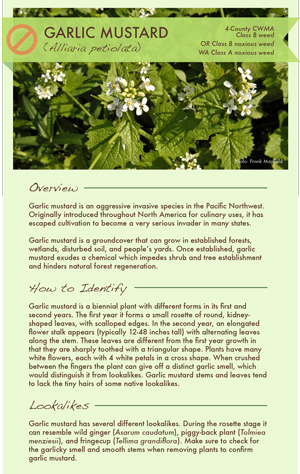Educating an Urban Public and Land Managers about Invasive Weeds
Having a clear, consistent message and speaking with one voice is helpful when it comes to educating the public about invasive species.
 But around Portland, Oregon, speaking with one voice is a challenge in an urban area that includes two states, four counties and dozens of cities. Homeowners and even land managers in the region could easily hear several different recommendations or control strategies for common invasive weeds like yellow archangel and old man’s beard.
But around Portland, Oregon, speaking with one voice is a challenge in an urban area that includes two states, four counties and dozens of cities. Homeowners and even land managers in the region could easily hear several different recommendations or control strategies for common invasive weeds like yellow archangel and old man’s beard.
So in 2012, the Clackamas, Clark, Multnomah and Washington County Cooperative Weed Management Area around Portland began a project with the Western IPM Center to bring consistency to the invasive species chaos. The 4-County CWMA, as it’s informally known, created a team with members from the cities and soil and water conservation districts within its boundaries to put together fact sheets identifying common invasive species and spelling out IPM-based control strategies for each.
In the end, the team, led by Weed Management Area Coordinator Elena Cronin, created 10 fact sheets, covering the following species:
- American Pokeweed
- Blackberry
- English Ivy
- Garlic Mustard
- Giant Hogweed
- Lesser Celandine
- Old Man’s Beard
- Spurge Laurel
- Water Primrose
- Yellow Archangel
Each fact sheet includes an overview of the plant, pictures and descriptions of how to identify it, lookalikes, information on when to remove it, preferred and alternative control methods and cautions specific to each species or control method. The fact sheet for giant hogweed, for example, recommends calling a licensed herbicide applicator since the plant’s sap can seriously damage skin and eyes.
Most of the control methods outlined in the fact sheets stress manual and mechanical control, increasing awareness if IPM practices and presenting herbicides as one of an array of available tools.
The group also held five trainings around the Portland metro area, attended by 60 people, and printed 2,000 copies of each fact sheet, including 500 each in Spanish.